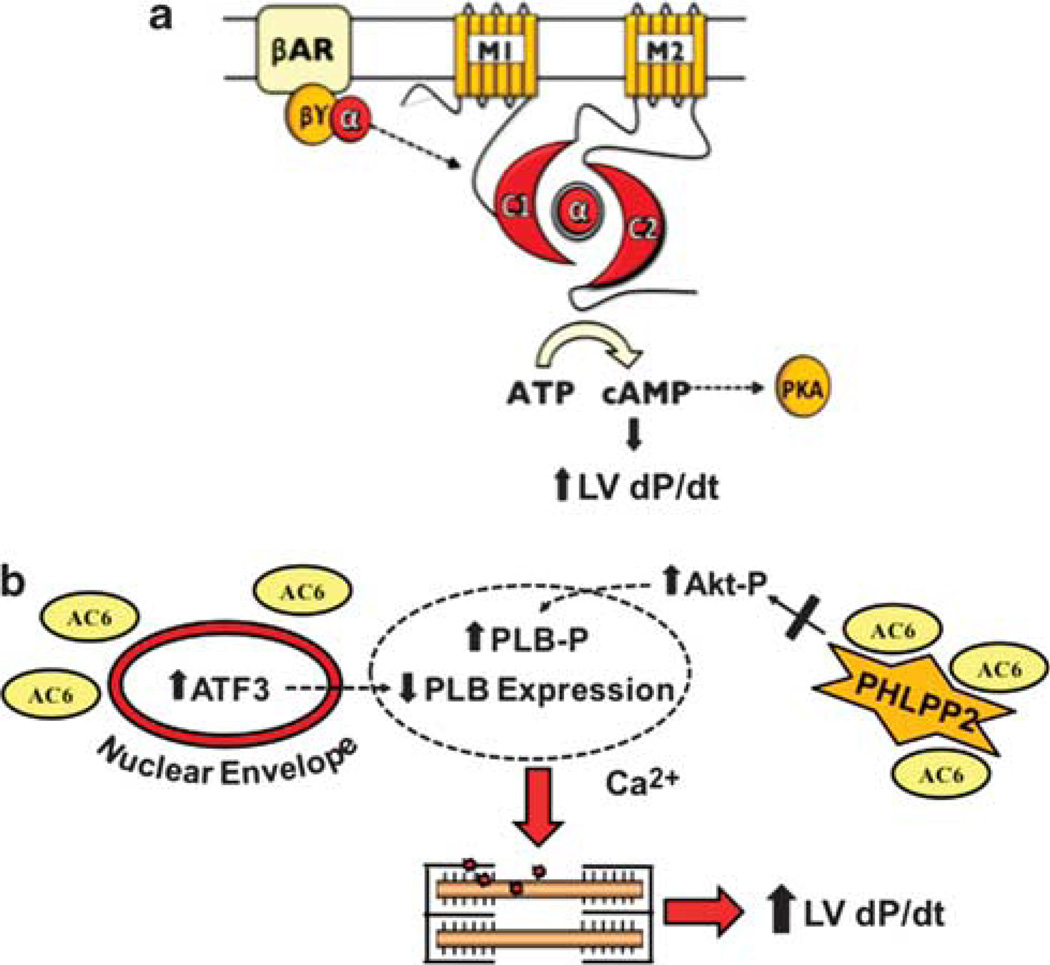Figure 1.
Hypothetical model of cAMP-independent effects of AC6 gene transfer. Cardiac AC6 expression has beneficial cardiac effects, through both (a) cAMP-dependent and (b) cAMP-independent events. The hypothetical mechanistic model summarizes data from experiments using adenovirus-mediated gene transfer of AC6 in cultured cardiac myocytes. Transgene AC6, widely distributed in the cytoplasm owing to gene transfer, has access to previously inaccessible intracellular proteins and cytoplasmic compartments. For example, AC6 is associated with the nuclear envelope and increased nuclear ATF3 expression is observed, which reduces PLB expression.58 Association of transgene AC6 with PHLPP2 (an Akt phosphatase) reduces its phosphatase activity, promoting Akt activation and subsequent PLB phosphorylation.59,60 The effects of transgene AC6 on PLB, which promote calcium handling and contractile function, are cAMP independent. α, Gαs subunit; βγ, Gβγ subunits; Akt-P, Akt phosphorylation; ATF3, activating transcription factor 3; C1, AC6 catalytic domain 1; C2, AC6 catalytic domain 2; LV, left ventricular; M1, AC6 transmembrane domain 1; M2, AC6 transmembrane domain 2; PHLPP2, pleckstrin homology domain leucine-rich repeat protein phosphatase 2; PKA, cAMP-dependent protein kinase A; PLB, phospholamban; PLB-P, phospholamban phosphorylation.

